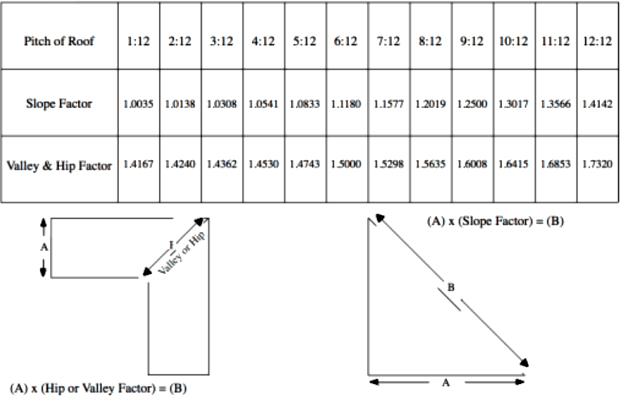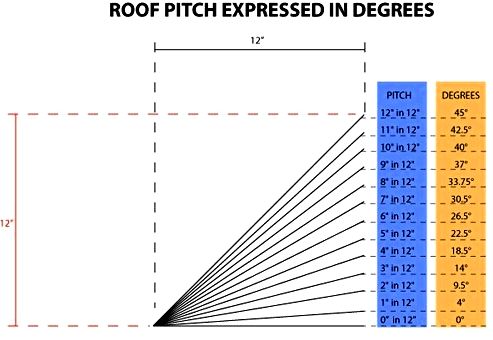Pitch, position, incline, slope – all of them may be used to make reference to the steepness of the roof. Within the roofing trade a tight schedule-to term is “pitch” which is expressed when it comes to “12 inches.” Therefore the pitch of the roof is dependent upon the number of inches the slope increases for each one foot it runs horizontally. If your roof increases tall by four inches for each feet of horizontal run, it’s considered to possess a “4-in-12 pitch” or simply a “4 pitch.” Talk when it comes to pitches and you’ll always be understood within the roofing world.
American Roofing and Chimney
New Jersey Roofing and Chimney Repair and Installation Specialist
Calculating a roof covering pitch
Ideally you’ll have safe use of your homes roof from the building. Otherwise you will have to help make your measurement from on the top from the roof itself or close to the rooftop having a ladder. The various tools needed is a contractor’s level a minimum of 24 inches lengthy along with a tape-measure. Put the butt finish from the level from the fringe of the rooftop and extend it in to the air, balancing it until it might be level. At that time measure lower in the uncovered butt finish to the rooftop surface. Divide the outcomes by the amount of 12-inch segments inside your level. For instance, should you used a 24-inch level as well as your measurement was one foot the help out your homes roof is 6-in-12.
You may also estimate a roof covering pitch by eyeballing it in the ground in the gable affiliate with an amount and ruler. If for whatever reason you’ve simply no use of fundamental tools you are able to guesstimate the pitch of the roof by understanding that clapboards generally present four inches of uncovered face along with a dollar bill is six inches. So that you can count the clapboards in the low finish from the roof to the top level and employ $ 1 bill to determine your stride and pace from the how big your building. Make your mathematical calculations.
Using roof pitch to buy materials
Knowing the width and entire space to become covered you are able to use the roof pitch to find out just how much roofing material to buy without departing yourself short or wasting cash with overages. To achieve that requires fundamental geometry but don’t worry, you can easily make reference to tables which are standard in the market:
Multipliers employed for estimating roof area according to slope:

pitch – 1.00X the rooftop area (as this is a set roof or nearly flat roof. You are able to pass the measurements taken when walking the rooftop)
1 pitch – 1.01
2 pitch – 1.02
3 pitch – 1.03
4 pitch – 1.05
5 pitch – 1.085
6 pitch – 1.12
7 pitch – 1.16
8 pitch – 1.21
9 pitch – 1.25
10 pitch – 1.31
11 pitch – 1.36
12 pitch – 1.42

Roof Pitch Expressed in Levels:

12 pitch = 45 levels
11 pitch = 42.5 levels
10 pitch = 40 levels
9 pitch = 37 levels
8 pitch = 33.75 levels
7 pitch = 30.5 levels
6 pitch = 26.5 levels
5 pitch = 22.5 levels
4 pitch = 18.5 levels
3 pitch = 14 levels
2 pitch = 9.5 levels
1 pitch = 4.5 levels
pitch = levels
How Roof Pitch Manifests Itself in a variety of Roof Types

Roof shapes have evolved through history in various regions around the globe from flat to steeply pitched. Here are the common shapes topping roofs today:
Flat roofs are typical with industrial structures boasting wide roof spans and are generally famous dry climates for houses where there’s no requirement for the rooftop to assist disperse snow and rain. Even just in these arid regions so-known as “flat roofs” continue to be installed having a slight pitch to help keep water from pooling on the top from the structure.
A mono-pitched roof runs from the taller wall to some wall of lesser height to make a slope. This really is frequently a configuration seen on simple shed structures.
Saw-tooth roofs can frequently be viewed on old-school factories which were built with a number of mono-pitched roofs that are utilized to allow sunlight to filter lower towards the shop floor.
Pent roof is an accumulation of low mono-pitched roofs frequently seen on residential terraces.
A gable roof is really a traditional triangular-formed roof that may vary from a medium pitch to sharp angled roofs.
A-frame roof may be the sharpest gable-style roof resembling the form from the letter-A. It’s a traditional roof shape employed everywhere from tropical huts to Nordic ski chalets.
Asian-style roofs: The influences of Asian architecture have infiltrated American shores recently. Gracefully sloping roofs are frequently of medium pitch which highlight the horizontal spread from the structures.
Hipped roofs: These distinctive roofs with overhanging eaves feature four medium pitched sides and therefore are sign of Nederlander architecture which help disperse snow loads in northern climates. Hipped roofs are frequently utilized in complex roof formations using the “hips” facing different directions.
Saltbox roofs: The workhorse of Colonial America, the familiar saltbox is really a building that includes a lengthy, pitched roof somewhere, like the lid on the salt storage box. Their attractiveness traces towards the want to make a 2-story building be the one-story building to lessen the goverment tax bill. The big expanse of these a roof covering may cause greater expense to pay for.
A mansard roof, towards a salt box, provides the utility of the full half-room around the upper floor instead of an attic room. It features tow pitches, one a shallow pitch atop a steeper slope.
Pyramidal roofs: Sometimes seen on square structures, a tented or pyramidal roof, feature four slopes rising to some peak. They are frequently steeply pitched roofs.
Gambrel roofs: Well-liked by barns along with other structures that induce additional interior room, these walked roofs have a short steep, non-walkable slope before rising more lightly to some ridge peak.
Clerestory roofs: One other popular form for factories requiring light infiltration, the clerestory features lengthy, low-pitched roofs prior to the building increases to some traditional gabled section atop the dwelling.
Conical roofs: A standard feature of Queen Anne Victorian architecture these conical towers were capped with dunce-cap roofs which are too steep to become stepped onto.
Arched roofs: Seen on utility structures there are many kinds of medium-pitched roofs which include curves from gentle arches to bows and barrels.
Circular roofs: These full arched roofs could be everything from domes to decorative Byzantine-inspired onion domes. Domed roofs could be low-pitched or fully circular.
Benefits and drawbacks of numerous roof slopes
Low pitch roofs are simpler to set up and far better to walk around to accomplish repairs and maintenance. This really is fortunate since flat roofs tend to be more vulnerable to leaks and wish frequent inspections. Low-pitch roofs are rarely utilized in parts of tornados because of the stress of snow accumulation on roofs of structures. Flat roofs are considerably cheaper to set up than the usual pitched roof but want more maintenance. Flat roofs are famous parts of sparse rain fall and therefore are popular with modern architects in contemporary designs.
Medium-pitched roofs come in a number of styles and supply assist with scattering snow and rain fall yet still be capable of being inspected and repaired through the average homeowner when walking round the surface.
High-pitch, non-walkable roofs are dynamic and offer a thrilling appearance, but they’re more costly to set up, and repairs is going to be left to roofing companies with the necessary safety equipment.
Resourse: https://roofingcalc.com/roof-pitch/
Construction Master Plus EZ Roofing Materials Estimating How To
Tags: estimating, figuring, pitch, roof
Comments are closed here.
